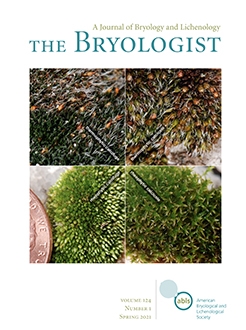We evaluated and compared the physiological and morphological response to pollution of two epiphytic lichen species, the foliose lichen Flavopunctelia praesignis and the fruticose lichen Usnea ceratina. Lichen samples were collected at remote areas and transplanted at different distances and directions from a paper industry in Morelia (Michoacán, Mexico). Lichen transplants were exposed for 4 months (1) around the industrial area and (2) in their native habitats (control sites). Changes of total chlorophyll content between samples before and after exposure, and morphological damage in the lichen thalli were investigated. Lichens showed species-specific responses. Flavopunctelia praesignis increased in total chlorophyll content after exposure around the industrial area and in control site. This suggests that total chlorophyll changes by a seasonal effect than pollution effect. On the other hand, chlorophyll content of U. ceratina did not change significantly after exposure. Bleaching, changes in color, deformations, and necrosis of lichen thalli were better visible in U. ceratina near the paper industry. We conclude that U. ceratina is a more pollution-sensitive species than F. praesignis. Morphological damage in the lichen thalli would be a suitable indicator for monitoring early biological effects of air pollution caused by the paper industry.
How to translate text using browser tools
16 March 2021
Effects of air pollution on chlorophyll content and morphology of lichens transplanted around a paper industry (Morelia, Mexico)
Violeta Rangel-Osornio,
Ana Belén Fernández-Salegui,
Víctor Manuel Gómez-Reyes,
Ruth Alfaro Cuevas-Villanueva,
Leonel Lopez-Toledo
ACCESS THE FULL ARTICLE

The Bryologist
Vol. 124 • No. 1
Spring 2021
Vol. 124 • No. 1
Spring 2021
air pollution
biomonitoring
photobiont
pollution damage
tropical region




